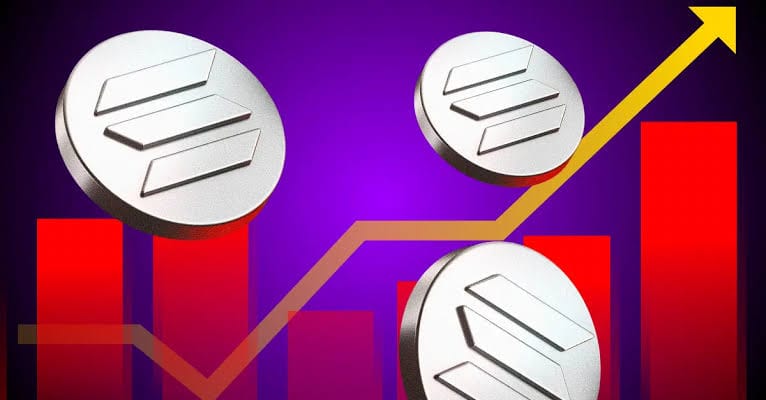DeFi Development Corp’s $1B Solana Fund Hits Regulatory Wall

SEC pushback stalls institutional Solana exposure, what it means for adoption, trust, and long‑term positioning
Introduction
The crypto world had barely finished celebrating “Crypto Week” when the momentum hit a snag. DeFi Development Corp (DDC), a prominent digital asset management firm, withdrew its SEC filing for a $1 billion Solana investment trust—a move that sent ripples through markets and reignited old debates about regulatory friction.
Meant to mirror the structure of Grayscale’s Bitcoin and Ethereum trusts, the Solana vehicle aimed to offer compliant institutional exposure to SOL, bypassing the technical headaches of self‑custody. But with the SEC’s tacit disapproval and lack of clear feedback, DDC has pulled back—for now.
In this analysis, we’ll explore:
- What DDC’s Solana trust filing was meant to do
- Why the SEC likely rejected or stalled the process
- What this means for institutional interest in Solana
- How Solana’s broader narrative is evolving amid setbacks
This isn’t just a legal roadblock—it’s a strategic pause with market-wide implications.
1. Inside DDC’s Solana Trust Vision
DDC’s proposed trust was set to be the first SEC‑registered, single‑asset Solana investment product tailored for pension funds, RIAs, and hedge funds. Structured as a closed‑end fund with quarterly redemption windows, it would have:
- Held native SOL in cold custody with Coinbase Institutional
- Tracked Solana’s market price, with daily NAV updates and audited reserves
- Enabled passive exposure, much like GBTC or ETHE, for institutions unable or unwilling to manage wallets
The trust was designed as a launchpad for deeper Solana integration, including yield‑bearing vaults, tokenized staking baskets, and potentially even Solana ETF aspirations.
For many, it signaled Solana’s “institutional moment”—a formal arrival in the same league as Bitcoin and Ethereum. That dream is now on hold.
2. Why the SEC Pumped the Brakes
Though no public statement was released, sources close to the matter suggest the SEC expressed discomfort with several key issues:
- Solana’s security status: The Commission has not officially classified SOL as a commodity. Its inclusion in previous enforcement actions (e.g., against Coinbase) as a possible unregistered security may have raised red flags.
- Lack of regulated futures markets: Unlike BTC and ETH, SOL lacks a CFTC‑regulated futures ecosystem—a key precedent for ETF‑style approval.
- Solana’s decentralization metrics: The SEC reportedly requested more clarity on validator distribution, uptime reliability, and network resilience.
Rather than fight an uphill battle in murky waters, DDC chose to voluntarily withdraw its filing and rework the structure—a move analysts see as both cautious and strategic.
3. Institutional Implications: Risk Aversion and Delayed Capital
DDC’s pullback doesn’t just affect one fund—it sends a signal to the broader market about regulatory temperature and Solana’s institutional readiness.
What It Means Short‑Term:
- Pause on inflows: Large funds waiting on a regulated Solana vehicle will likely stay sidelined. This could suppress near‑term TVL growth in Solana DeFi protocols.
- Risk repricing: SOL’s recent bullish momentum cooled slightly as traders interpreted the retraction as a sign of latent regulatory risk.
- Competitor positioning: Ethereum and Bitcoin continue to enjoy clearer regulatory pathways, possibly absorbing capital that might have otherwise rotated into Solana.
What It Means Long‑Term:
- Redesigns ahead: Expect DDC and others to explore alternative structures—possibly 506(c) private placements or offshore offerings to institutional LPs.
- Lobbying pressure: Solana Foundation and affiliated entities may need to ramp up DC engagement to clarify SOL’s legal classification.
- Industry learnings: Other L1s (e.g., Avalanche, Near, Aptos) will closely study this setback to anticipate their own regulatory hurdles.
This is a clear reminder: capital appetite alone isn’t enough—legal infrastructure must match market ambition.
4. Solana’s Narrative: Setback or Stepping Stone?
Despite the trust filing retraction, Solana’s fundamentals remain strong—and many in the community see this as a delay, not a denial.
Bullish Signs Persist:
- High throughput and low fees continue to attract builders and DEX volume.
- Solana Pay, Saga 2.0, and real‑world integrations point to growing retail and developer momentum.
- Institutional pilots in tokenized RWAs (real‑world assets) are still advancing, especially in Asia and Europe.
What Needs Work:
- Clearer governance narratives: Solana still lacks an institutional‑grade governance layer that can explain validator incentives and decision‑making frameworks to regulators.
- More diversified custody support: Expanding custody beyond Coinbase and Fireblocks could help reduce perceived centralization.
- Regulatory engagement: Unlike Ethereum, Solana has fewer allies in DC. Building those bridges is crucial for the next push.
In essence, the trust’s withdrawal might just be a necessary recalibration before a bigger leap forward.
Conclusion
DDC’s decision to retract its SEC filing for a $1 billion Solana trust is a temporary blow—but not a death sentence. It highlights the growing tension between innovative capital markets and legacy regulatory frameworks still playing catch-up.
For institutions, the message is nuanced:
- Solana is technically ready
- Capital is eager
- But Washington remains wary
The path forward will require patience, lobbying, and careful structuring. And if those pieces fall into place, the next iteration of Solana investment products could be stronger, leaner, and more legally robust.
Until then, Solana’s institutional story pauses—but it hasn’t ended.
Internal Mitosis Links & Glossary References
- Bitcoin
- Blockchain
- Cryptocurrency
- Mitosis Core: https://university.mitosis.org/mitosis-core
- Governance: https://university.mitosis.org/governance
- Glossary: https://university.mitosis.org/glossary/
- Ecosystem Connections: https://university.mitosis.org/ecosystem-connections


Comments ()